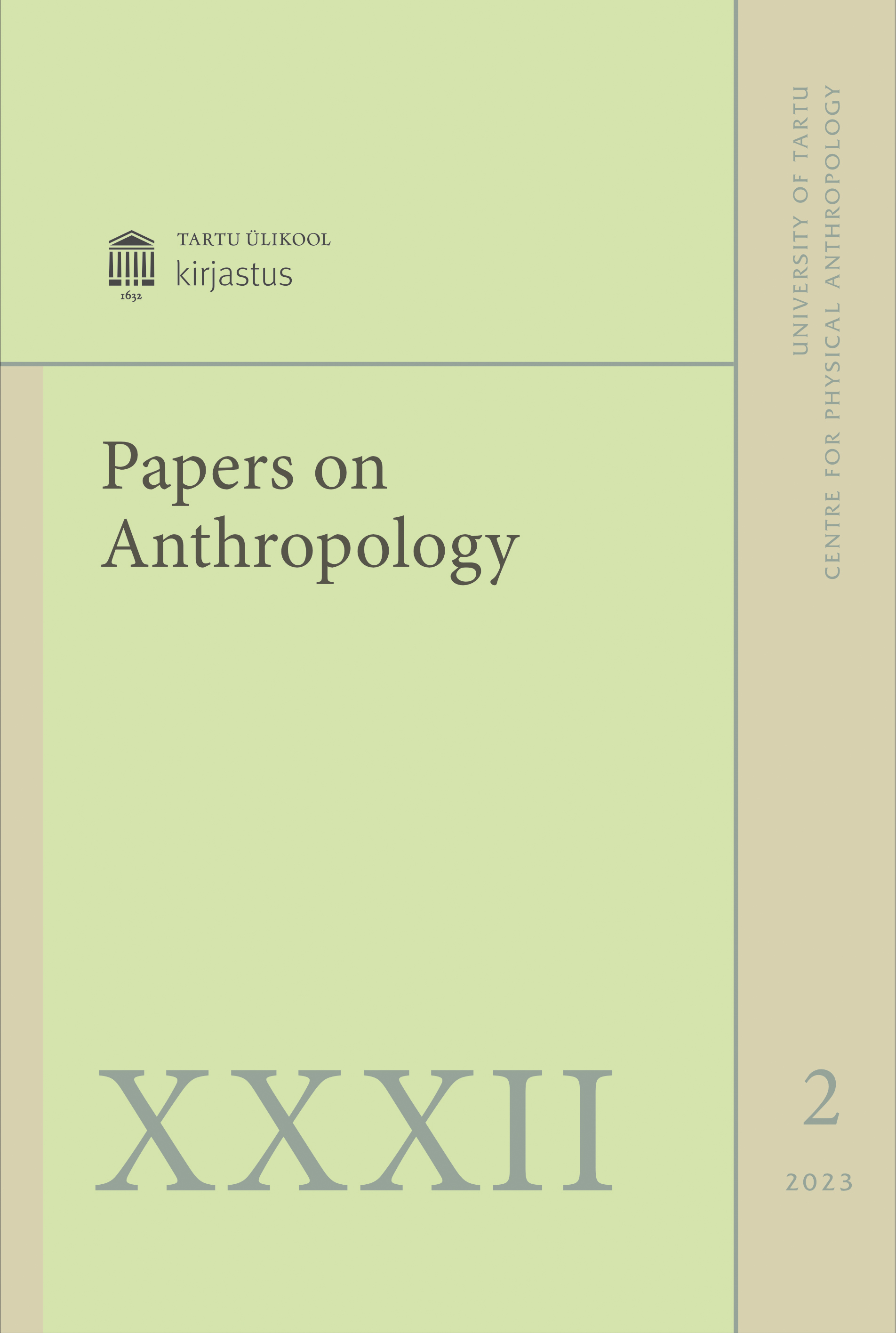The role of anthropometric variables in assessment of obesity among Tripuri women of North-East India
DOI:
https://doi.org/10.12697/poa.2023.32.2.04Keywords:
obesity, anthropometry, women’s health, scheduled tribe, Northeast IndiaAbstract
Obesity is an etiologically complex and multifactorial phenotype, underpinned by genetic, environmental, socioeconomic and behavioural or psychological factors. Worldwide prevalence of obesity is reaching epidemic or pandemic proportions, which has resulted in an increased prevalence of obesity-related co-morbidities and financial burden that needs effective interventions. The prevalence of obesity varies significantly across the world, and several studies have been conducted in this regard in different regions on different age groups, but studies on the tribal female population of Northeast India are underrepresented, being mostly limited to schoolchildren. Under these circumstances, the present study was conducted to assess the prevalence of obesity among the tribal females of Tripura, Northeast India.
To achieve this purpose, the present study was conducted on 114 adult Tripuri females of Northeast India. Data were collected on anthropometric variables – height, weight, waist circumference (WC), and hip circumference (HC) – by using the standard technique. Then, from these anthropometric measurements, a number of indices – waist-stature ratio (WSR), body mass index (BMI), conicity index (CI) and waist-hip ratio (WHR) were calculated. The necessary descriptive and inferential statistics were calculated by using SPSS version 18.
The present study vindicated that only 22% women were overweight as per BMI, but 88% and 72% women were in the high-risk category on the basis of WHR and WSR respectively. Moreover, 86% of the females were biconic, which indicates higher prevalence of central obesity among the studied population.
Therefore, it can be concluded that anthropometric variables can be used as one of the efficient tools to assess obesity and health status of the Tripuri women. More in-depth studies using large samples and other different anthropometric indicators are required for better insightful approach towards ethnic group specific public health policy making.

